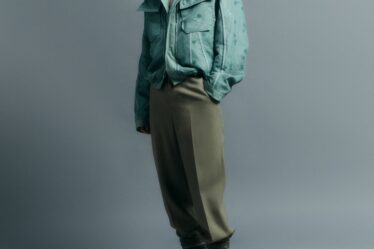Learning which colors you should not wear together, is an important part of developing your own sense of style. As children, we don’t always have any sense of harmonizing colors and if we chose our own outfits, the colors could well be pretty mis-matched. But the teen years see us start to develop an appreciation of what looks good on other people and a desire to look just as good. And a vital part of your individual fashion style is knowing which colors you shouldn’t wear together.
It’s a complicated subject, which seems to be changing all the time, but only because fashion designers like to introduce new key fashion colors each season. Sometimes these are successful, like the time when emerald green was daringly paired with deep blue in lots of women’s outfits. And in recent years, we’ve seen lots of pretty pink attractively matched with soft green in fabric patterns.
Classic clashes
But other times, a new fashion just turns out to be a horrendous mistake – like the fashion for re-decorating bars in bright orange and purple in the 1970’s! That was a classic warm clashes with cool color disaster. And a couple of years ago, a fashion stylist dressed Meghan Markle in an attention-grabbing outfit of a purple dress under a red coat. It’s just too much color intensity, even though both are cool colors, so it’s tiring on the eyes.
Tones and shades
However, it’s difficult to set hard and fast rules for what colors you should not wear together, as everything depends on the tones and shades of the colors you try to match. Fabric tinting includes a lot of color mixing between warm and cool colors, to create new tones and shades. And really you need to be able to use your own observation of which colors don’t go together on other women, to inform your own choices.
For example, you wouldn’t normally wear a pink blouse with an orange skirt, but one of the fashion world’s favorite new colors has been salmon-pink and a similar color, coral. These two shades are produced by mixing pink and orange in varying quantities, and so they are a fine balance between warm and cool colors!
Match the ‘undertones’
Generally speaking, women have a better understanding of which colors look good together and frequently have to advise their male partners about stylish color matching. And there are basic rules like matching contrasting and complementary colors successfully by choosing the same ‘undertones’ and intensity of color.
For instance, black can have a variety of undertones, including brown, green, blue and purple. So you wouldn’t want to wear a brown blouse with a black skirt or trousers, if the black fabric had a blue or purple undertone. This is because brown is a warm color, which would not look good with blue or purple, which are cool colors.
Avoid uni-color separates
In fact, trying to team a selection of black, or white, garments together can be a nightmare! There are so many different undertones to black and white clothes that you shouldn’t try to pair the same color together. And the same goes for any uni-color outfit, so don’t try to wear two or more garments of the same color, unless they have the same undertones.
For example, red can have orange undertones and it can also have deep pink undertones, which would make a terrible mis-match. And the reason is that orange is a warm color, but deep pink is a cool color. Similarly, green can have so many different shades – some of which include yellow and others which include blue. So if you put different shades of green together, you can get an unpleasant clash between the yellow and blue undertones, even though they are both cool colors!
Consider color intensity
Imagine a bright yellow blouse paired with a deep blue blouse, which technically should ‘go’ together, but the intensity of the two cool colors could produce an overpowering blast of color that’s just too bright! So sometimes the key to getting the best look from colors you should not normally wear together is to just add a touch of the other bright color to your outfit, with a scarf or bag or shoes.
Avoid these color pairings
Here’s a list of fashion colors that are generally agreed to be ones you shouldn’t wear together:
- Brown with black
- Brown with gray
- Dark blue with black
- Green with orange
- Green with red
- Purple with yellow
- Red with orange
- Red with pink
- Red with purple
And for the scientific point of view, consult this color wheel. The rule is not to wear together colors that are ‘opposite’ each other on the color wheel.
Colors you should wear together this season
Natural earth tones always look classy and they include soft versions of orange, warm browns, soft turmeric yellow, moss-green, and gentle reds. In the brighter colors, Biscay green is a gentle yellow-green, that’s lighter than moss-green, can be worn with deep-blue. So for a trendy look this could be dark-blue jeans with a fresh-looking light green top. And black, white and gray shades are fashionable again this season.
Match your natural coloring
Another important thing to consider is your own natural skin, hair and eye color. Because you must wear warm colors if your own skin undertones are warm, or cool colors if you have cool skin undertones. In general, warm natural coloring shows up as brown or honey-colored eyes, and cool as either black eyes or blue, green or gray eyes and cool skin undertones.
Mirror & strong light check
The key to deciding which colors you should not wear together is to have a full-length mirror and try on clothes in as much natural daylight as possible. Too much brown or swampy green will make you look frumpy. And too many bright shades could leave you looking like a fairground attraction! The colors you wear together can totally change your image, so take note of your first impression – good or bad – when you look in the mirror at any color combination!



